Steamy, humid rooms such as the bathroom, utility and kitchen can be a pain.
Well, you don't need to worry about excessive heat or humidity anymore. A reliable inline extractor fan can handle that for you while also improving oxygen circulation in your rooms.
Carry on reading and learn how an inline extractor fan works and find out which type would best suit your needs!
So, let's dive in and explore the world of heat recovery systems!
- What is an inline extractor fan?
- How do inline extractor fans work?
- Where can inline extractor fans be used?
- Types of inline extractor fans
- Do inline extractor fans cool or dehumidify rooms?
- What is an inline extractor fan used for?
- Where should an inline extractor fan be placed?
- How far can an inline fan extract?
- How to choose the best inline extractor fan for you?
- Advantages and disadvantages of inline extractor fans?
What Is an Inline Extractor Fan?
An inline extractor fan is a ventilation system that works by removing stale air from your home and replacing it with fresh air. They can be installed directly into an air duct to provide maximum airflow. It effectively reduces humidity levels and eliminates unwanted odours in rooms with poor ventilation.
How Do Inline Extractor Fans Work?
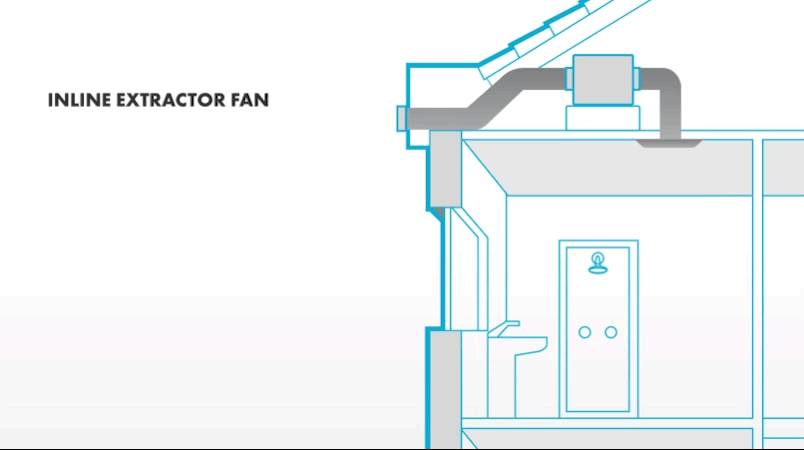
An inline extractor fan, also known as an inline bathroom extractor fan, is a key component in maintaining good indoor air quality. This type of fan is installed in the roof or loft space above the bathroom with ducting running from a small grille, typically near the point where the air is exhausted from a room. The fan creates negative pressure, drawing the air out of the room and through the ductwork, where it is then exhausted outside. Inline extractor fans use an electronically commutated motor, which operates at a low noise level and with high energy efficiency.
Where Can Inline Extractor Fans Be Used?
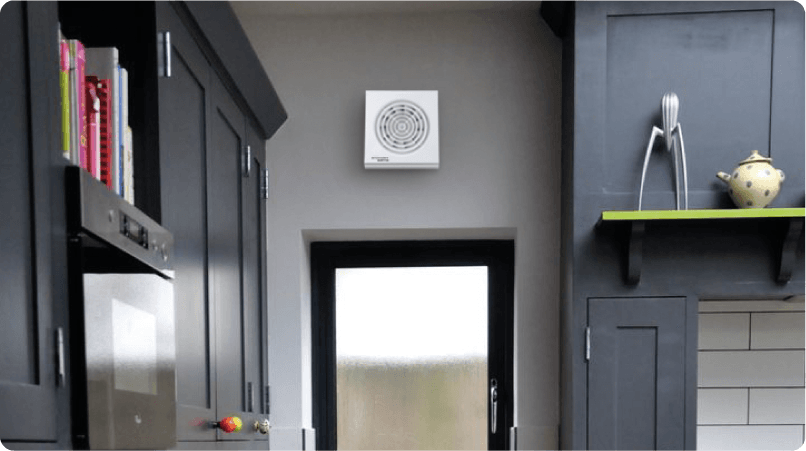
Inline extractor fans are the unsung heroes of any room in need of a breath of fresh air. Whether it's a bathroom, kitchen, utility room, or even a bustling commercial space, these powerful devices are here to save the day. Not only do they come to the rescue in high-humidity areas, but they also improve air circulation throughout every corner of a room. Effectively eliminating odours or stagnant air caused by a lack of windows.
Types of Inline Extractor Fans

There are several types of inline extractor fans available on the market, each with its own unique features and benefits.
- Standard Inline Extractor Fan: This is the most common type of inline extractor fan and is often used in bathrooms and smaller rooms. It is compact, affordable, and easy to install.
- Silent Inline Extractor Fan: As the name suggests, this type of inline extractor fan operates at a much lower noise level, making it perfect for use in rooms where quietness is essential, such as bedrooms or en suites.
- Centrifugal Inline Extractor Fan: This type of fan is designed for larger rooms or commercial settings. It has a more powerful motor and can handle higher volumes of air, making it ideal for areas with high levels of moisture.
For more information on the wide range of extractor fans check out our extractor fan buying guide.
Do Inline Extractor Fans Cool or Dehumidify Rooms?
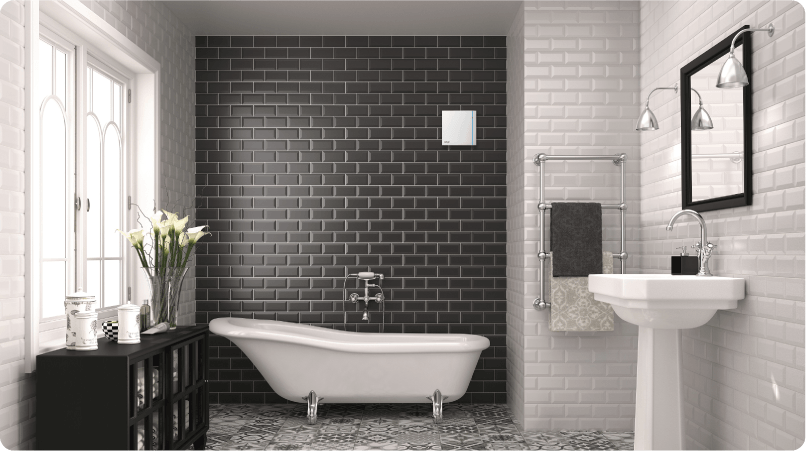
Inline extractor fans are not designed to cool or dehumidify a room. Their main purpose is to improve air circulation and remove excess moisture, odours, and pollutants from the air. However, by removing warm and humid air from a room, they can help create a more comfortable environment.
What Is an Inline Extractor Fan Used For?
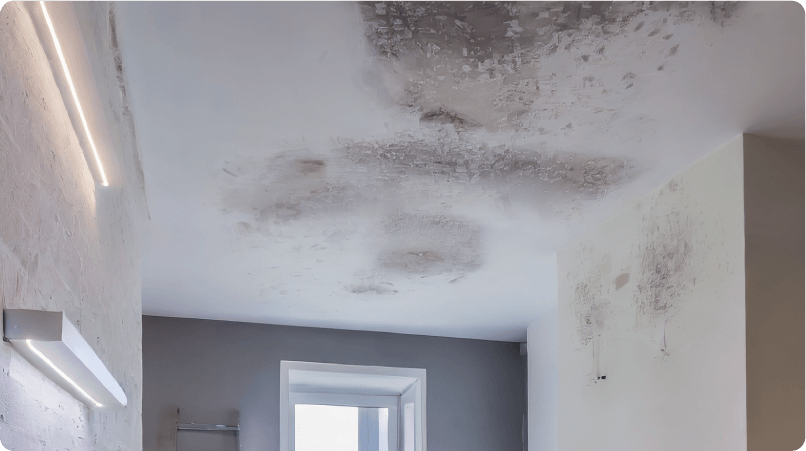
Inline extractor fans are essential for well-ventilated homes and commercial spaces. Installed within ductwork, these fans ensure reliable air flow, removing moisture, odours and impurities. They are commonly found in bathrooms, kitchens, and areas prone to moisture damage. By reducing the risk of mould and other contaminants, these fans prioritise health, comfort, and air quality. Easy to use, install, and durable, they are a wise investment.
Where Should an Inline Extractor Fan Be Placed?
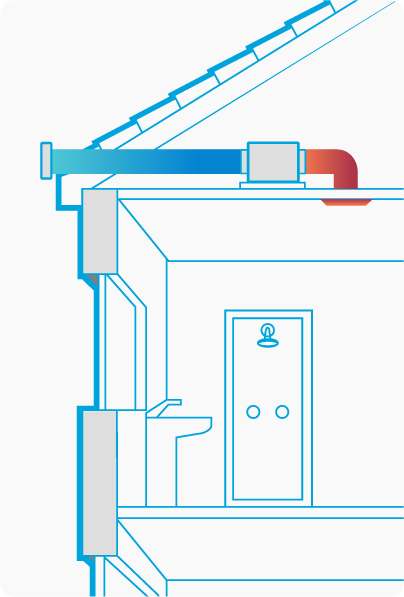
Inline fans are commonly installed in ductwork to facilitate ventilation or air movement in a specific area. The positioning of inline fans varies based on the type of ventilation needed.
Here are some common placement options for inline fans:
Between two sections of ductwork. In this setup, the fan is installed to force the air through as it travels from one section of ductwork to the next.
Near the ventilation source. Sometimes, it's more effective to position the inline fan close to the ventilation source. For instance, if you're using an inline bathroom extractor fan, consider placing it near the bathroom ceiling to swiftly eliminate moisture and odours.
When placing an inline fan, it's important to carefully consider its location to achieve peak performance and maximize energy efficiency.
How Far Can an Inline Fan Extract?
These versatile fans can be easily installed on duct runs of up to 10 meters. But here's a tip: the shorter the duct run, the more efficient the fan becomes. Our inline extractor fans are designed to deliver exceptional extraction rates from the start. Keep in mind that bends in the ducting add an additional meter, so plan accordingly.
How to Choose the Best Inline Extractor Fan for You?

When it comes to choosing the best inline extractor fan, there are a few key factors to consider before making your purchase. Firstly, it's important to think about the size of the room you're looking to ventilate and what type of ventilation you require. Inline fans come in a variety of sizes and airflow capacities, so it's important to choose one that matches your specific requirements. Consider the noise levels and energy efficiency of the fan for maximum value for money. Some other features to look for may be automatic shut-off timers or adjustable speed settings for even greater control over your environment.
Want to see some of the best extractor fans on the market? Take a look at our Top 5 Inline Extractor Fans.
Advantages and Disadvantages of Inline Extractor Fans?
Advantages

Air quality
Inline extractor fans are a valuable addition to your indoor space, enhancing air quality by eliminating unwanted air, moisture, and unpleasant odours. This ensures a fresh and clean atmosphere, promoting a healthier and more comfortable living environment for you.

Easy installation
Inline extractor fans are relatively easy to install, especially in comparison to other ventilation methods. With the right tools and a little bit of DIY knowledge, you can easily install your fan in just a few steps.

Energy Efficiency
These fans have been designed with energy efficiency in mind, using an electronically commutated motor that operates at a low noise level while also consuming less energy.

Quiet operation
Inline extractor fans are specially designed to operate quietly, ensuring that you won't be bothered by noisy ventilation systems. This makes them perfect for use in bedrooms with en suites or bathrooms.
Disadvantages

Possibility of air leakage
One drawback to using an inline extractor fan is the possibility of air leakage. This can occur if the fan has not been correctly installed or sealed, which may result in poor ventilation and increased energy consumption. So, make sure you install your inline extractor fan correctly or get a professional to help.

Higher cost
Compared to other types of extractor fans, such as wall-mounted or ceiling-mounted, inline extractor fans tend to be slightly more expensive, but as they consume less energy, they can be cheaper in the long run.

Limited cooling capacities
As mentioned earlier, inline extractor fans are not designed for cooling purposes. While they can help remove warm air from a room, their main purpose is to improve air circulation and remove excess moisture.
We hope that you're now familiar with how an inline extractor fan works! These devices not only greatly enhance ventilation and air quality in your home, but they do so with remarkable efficiency and effectiveness. With their hassle-free installation, energy-saving features, whisper-quiet operation, and significant improvement in air quality, they truly are a valuable investment for any indoor setting.
Check out our other extractor fan articles!









 Drying Clothes Dehumidifiers
Drying Clothes Dehumidifiers
 Low Energy Dehumidifiers
Low Energy Dehumidifiers
 Commercial Dehumidifiers
Commercial Dehumidifiers
 Dehumidifier Accessories
Dehumidifier Accessories
 Humidifiers & Air Purifiers
Humidifiers & Air Purifiers
 Inline Fans
Inline Fans
 Kitchen Extractor Fans
Kitchen Extractor Fans
 Bathroom Extractor Fans
Bathroom Extractor Fans
 Commercial Extractor Fans
Commercial Extractor Fans
 Shower Extractor Fans
Shower Extractor Fans
 Silent Extractor Fans
Silent Extractor Fans
 Heat Recovery Extractor Fans
Heat Recovery Extractor Fans
 PIV & Whole House Ventilation
PIV & Whole House Ventilation
 Extractor Fan Accessories
Extractor Fan Accessories
 Extractor Fan Controllers
Extractor Fan Controllers
 Panel Heaters
Panel Heaters
 Fan Heaters
Fan Heaters
 Patio Heaters
Patio Heaters
 Storage Heaters
Storage Heaters
 Towel Rails
Towel Rails
 Underfloor Heating
Underfloor Heating



 Time Controllers
Time Controllers
 Portable Air Conditioners
Portable Air Conditioners
 Air Coolers
Air Coolers
 Wall Mounted Air Conditioning Units
Wall Mounted Air Conditioning Units
 Commercial Cooling
Commercial Cooling
 Ceiling Cassette Air Conditioning
Ceiling Cassette Air Conditioning
 Desk Fans
Desk Fans
 Pedestal Fans
Pedestal Fans
 Floor Fans
Floor Fans
 Tower Fans
Tower Fans
 DC Fans
DC Fans
 Air Circulators
Air Circulators
 Ducting Kits
Ducting Kits
 Internal Grilles
Internal Grilles
 External Grilles
External Grilles
 Ducting Hose
Ducting Hose
 Ducting Clamps
Ducting Clamps
 Ducting Connectors
Ducting Connectors
 Compressor Dehumidifiers
Compressor Dehumidifiers
 Desiccant Dehumidifiers
Desiccant Dehumidifiers
 Electric Radiators
Electric Radiators
 Oil Filled Radiators
Oil Filled Radiators
 Oil Free Radiators
Oil Free Radiators
 Under Sink Water Heaters
Under Sink Water Heaters
 Over Sink Water Heaters
Over Sink Water Heaters
 Unvented Water Heaters
Unvented Water Heaters
 Instant Water Heaters
Instant Water Heaters
 Hand Wash Units
Hand Wash Units
 Air Curtains
Air Curtains




